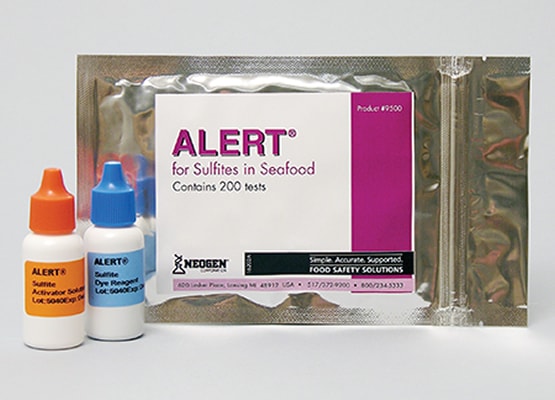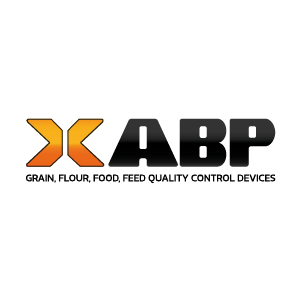
Alert® for Sulfites
Item No. 9500
- Simple three step method
- Rapid time to results
- Visual interpretation, no equipment

| Analyte | Sulfites |
| Brand | Alert® |
| Limit of Detection | 10 ppm |
| Package Dimensions | 8.00 IN x 4.00 IN x 1.50 IN |
| Package Weight | 0.10 LB |
| Platform | ELISA |
| Quantity per Package | 200 tests |
| Result Type | Semi-Quantitative |
| Testing Time | 60.00 Seconds |
Each test kit contains antibody-coated microwells with antibodies specific to the kit’s target substance.
First, samples and controls are added to their respective test wells. Next, an enzyme conjugate (target substance chemically linked with an enzyme) is added. The samples/controls and conjugate are mixed and transferred to antibody wells where they compete for the antibody binding sites. The more target substance in the sample, the less conjugate that binds in the wells.
After an incubation, the wells are washed to remove all unbound materials.
A substrate, which changes color in the presence of the conjugate, is added to the wells. During an incubation, blue color develops in proportion to the amount of conjugate versus target substance in the wells. The more conjugate bound, the more blue color that develops, indicating less substance present.
Results are read visually in a screening format—the less blue color, or more red, the more target substance detected. In a quantitative format, results are obtained by measuring the wells’ color change in a microwell reader and comparing the readings against a standard curve.
It represents world-leading brands and is the leading company for the technology needs of the Grain, Flour, Food, Feed industry.
Welcome to ABP WhatsApp Line ...
You can contact us and get information about our products and services...
